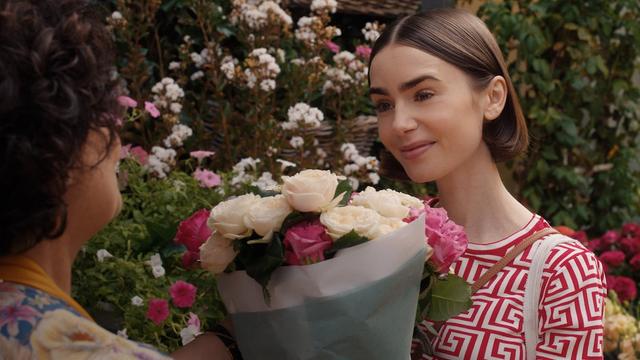If you click on a link and make a purchase we may receive a small commission. Read our editorial policy.
The Witcher returns to it season 1 form (and the novels) with the bewitching 'Act of Illusion' episode
In "The Act of Illusion," The Witcher returns to the playful, complex narrative style of the first season and also celebrates the storytelling of the novels

The end of Netflix's The Witcher season 3 volume 1 presents one of its most playful episodes, and also one of its most creative. In 'The Art of Illusion,' Yennefer and Geralt walk through the events of their evening at the mages’ ball three distinct times, each round revealing or uncovering new information.
Many have praised the episode’s Rashomon-style narrative. But in fact rather than some kind of homage to Kurosawa, episode 305 is a celebration of the storytelling style of Witcher author Andrzej Sapkowski, and a welcome return to the challenging, hyperfluid storytelling of the show’s first season.
The twisting timeline of season one of the Witcher

When the first season of the Witcher came out, one of the most mind-blowing aspects of its storytelling was the decision to tell stories that were happening at vastly different points in history alongside one another, without alerting the audience to the fact that they were doing this. So in the pilot we watch the Nilfgaardian invasion of Cintra in 1263, while Geralt of Rivia is in the town of Blaviken dealing with the mage Streogobor and the cursed princess Renfri in 1231. Future episodes would be even more daring, with stories from 1206, 1240 and 1263 happening concurrently, again without any acknowledgement of that fact.
From a storytelling point of view it was an audacious move that signaled the aspirations of the show. This was not going to be your typical TV series; these writers were going to mess with their audience every chance they got.
But in point of fact, this technique came straight from Sapkowski’s first book, The Last Wish. The first story, entitled 'The Witcher,' chronologically occurs after the next five stories, which themselves are not presented in chronological order either. Sapkowski’s work didn’t seem to have the same 'Mess with your head' goal in mind; the book was just a collection of stories about this mysterious warrior known as 'The Witcher.' But the potential was there. And the series was a distillation of that potential.
The Witcher season three’s return to form

Season two of the series, which is based on the third book, Blood of Elves (material from the second book having also been woven into the first season), proceeded in a much more straightforward chronological fashion. And while that, too, was consistent with its source material, and there were still multiple storylines to follow—Geralt and Ciri at Kaer Morhen; Yennefer struggling to regain her powers; Fringilla Vigo and Cahir trying to figure out their place in the White Flame’s army after their failures at the end of season one—audiences who had been taught by season one to expect creative and challenging storytelling were left underwhelmed, if not initially confused. Where was the ongoing sense of mystery and engagement?
The first five episodes of season three are also told in chronological order, but with some nice adjustments that hearken back to some of the strengths of season one. The first episode involves the passage of six months’ time. There’s an ongoing quest to discover who exactly is behind the fire mage Rience and his attempts to kidnap Ciri, and another about a dangerous book that gives Istredd and Triss a story of their own. Jaskier has secretly agreed to help Redania get Ciri. Also, it's just nice to have Geralt, Yennefer and Ciri all together for once.
And this return to form culminates in season 3 episode 5, the finale of the first volume of season three, in which we watch Yennefer and Geralt attend a ball the night before the Conclave of Mage. And unexpectedly, we’re shown the same series of events three times.

The first, we discover in retrospect, is just a facade that Yennefer and Geralt have set up. Geralt feels out of place amongst the gossip- and sex-starved mages in attendance, and has to be told not to attack the mage Stregobor. Instead, after interacting grumpily with all of the major players— Philippa Eilhart and Dijkstra of Redania; Tissaia and Vilgefortz; Triss Merigold— eventually he gets in a fight with Yennefer’s old love Istredd, and she storms off. Later they kiss and make up.

Then, as they lay in bed recalling the night’s events quite happily, we return back to the beginning, with them wondering whether they’re sure about this, as they did the first time through. But this time as they enter the ball we’re made privy to the real story of the evening, them searching for information to condemn Stregobor, who they believe to be the mage hunting Ciri and in league with Nilfgaard.
Geralt wonders once again if there’s always this much staring. Hearing that no, this is just for them, this time he says “Good.” In other words, they’re all right where we want them, just like us in the audience. (Truly, if someone were to write a guide about “How to Write for The Witcher,” high on the list of things to remember is that at its best, this show really delights in fooling its audience.)
The fight with Istredd proves to have been entirely staged, so that Yen can get to Stregobor’s room unnoticed. And once there she gets the evidence she needs to condemn him. Sooner even then she and Geralt had planned, Stregobor is taken care of.

And then, when it seems like everything is ended, we get one last go-round. And this time instead of showing us another layer of Yen and Geralt’s deception, we get the reveal of the ways they themselves have been deceived, and not just tonight. Philippa reveals that the entire Sodden Hill battle from the end of season one was a set up to kill as many mages as possible; and the sorcerer Vilgefortz, who helped push for that effort, has Yennefer’s mentor Tissaia by his side, and supported the arrest of Stregobor, is the real enemy.

Written by Clare Higgins, the episode is a lot of fun to watch, and a welcome return to the mind-fuckery we expect from The Witcher.
How the storytelling of The Witcher also captures the style of the novels

The Witcher's fifth episode in season 3 is also worth celebrating for the ways that it engages with the style of Sapkowski’s storytelling in both this chapter from Time of Contempt, the novel upon which season three is based, and in general.
On one level, the TV episode seems pretty different. Sapkowski tells the story of Yen and her Witcher at the mage ball in a mostly linear fashion, one event following fully on the next with no subsequent return visits. But there is a waltz-like swirling quality to the proceedings, various people suddenly showing up at Geralt and Yennefer’s arms, causing trouble or trying to gather secret information, then disappearing to be replaced by another. Bringing us round and round back through the same narrative in the episode proves a nice way of bringing out that dizzying, spinning feeling.
The third time through, in which Yen and Geralt each recollect a specific moment from the night—Yennefer with Philippa, Geralt with Vilgefortz—also mirrors the second half of Sapkowski’s chapter, in which as the two lie in bed Yennefer has Geralt tell her the story of his encounter with Vilgefortz. It also captures what is very much a hallmark of Sapkowski’s novels: Even as his overall style shifted from individual short stories in the first two books to an ongoing narrative, still throughout the series Sapkowski takes a special delight in having characters themselves tell the stories of events, sometimes multiple characters within a single chapter.
As distinct from the famous Rashomon story, Sapkowski’s idea in offering multiple points of view does not seem to be to suggest the untrustworthiness of any one narrator or the multiplicity of truth. Rather, he seems interested in giving the overall narrative a sort of immediate fantasy or mythological-like quality. Even events that have only just happened, when retold—sometimes literally around a campfire—become something different, something more layered, more murky, and more interesting.
As the novels go on this fascination with mythology on Sapkowski’s part only grows, with characters from Norse and Arthurian mythology making appearances both as myths and as actual figures within the narrative. Ciri herself is eventually mistaken for the Arthurian "Lady of the Lake.”
Higgins doesn’t take Geralt and Yen’s story-telling in exactly that direction. Rather than mythology at this point she’s doing more the Witcher version of a Mamet play, con artists conning con artists, with all the twists and reveals which that entails. But that absolutely fits what season one of the Witcher taught us to anticipate and enjoy. Truly, a great part of the fun of watching the Witcher is in discovering how the writers have messed with you.

Higgins’ approach captures the world of the mages that Sapkowski created, too. Thoroughly infatuated with illusion and their own capacity to mythologize themselves, the sorcerers and sorcerers of the Brotherhood are unable to trust the actual truth even when it’s standing before them. Ultimately, how can such a group survive, powers or not?
The answer comes to Netflix July 27.
The Witcher: How to watch Netflix's hit sword and sorcery show in release and chronological order.
Follow Popverse for upcoming event coverage and news
Find out how we conduct our review by reading our review policy
Let Popverse be your tour guide through the wilderness of pop culture
Sign in and let us help you find your new favorite thing.
















Comments
Want to join the discussion? Please activate your account first.
Visit Reedpop ID if you need to resend the confirmation email.